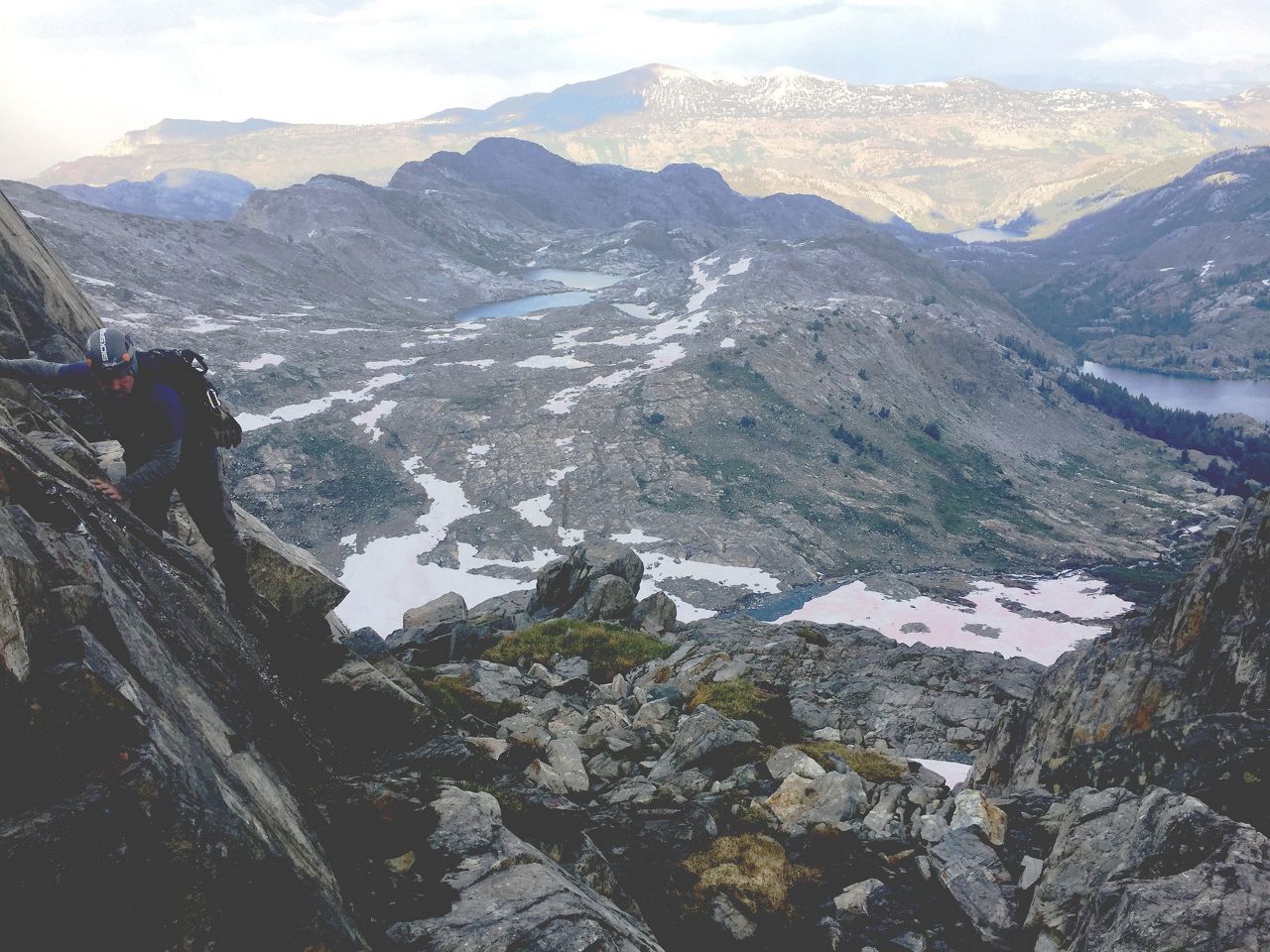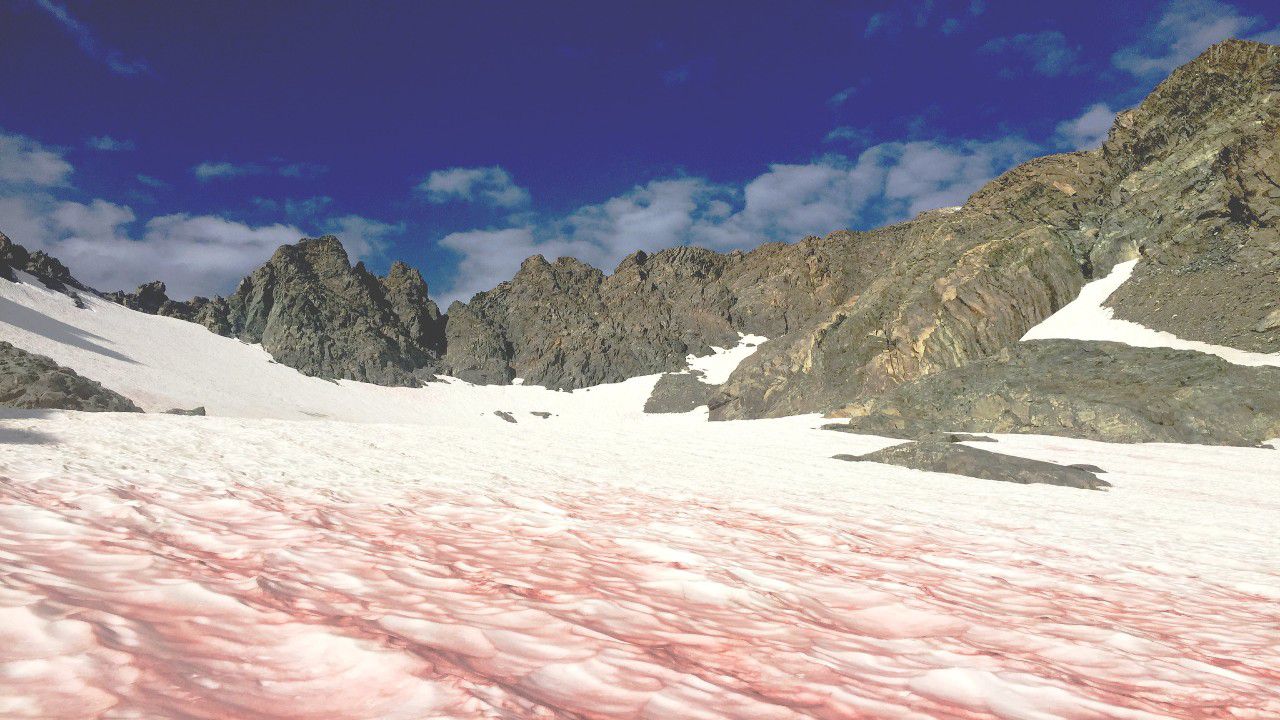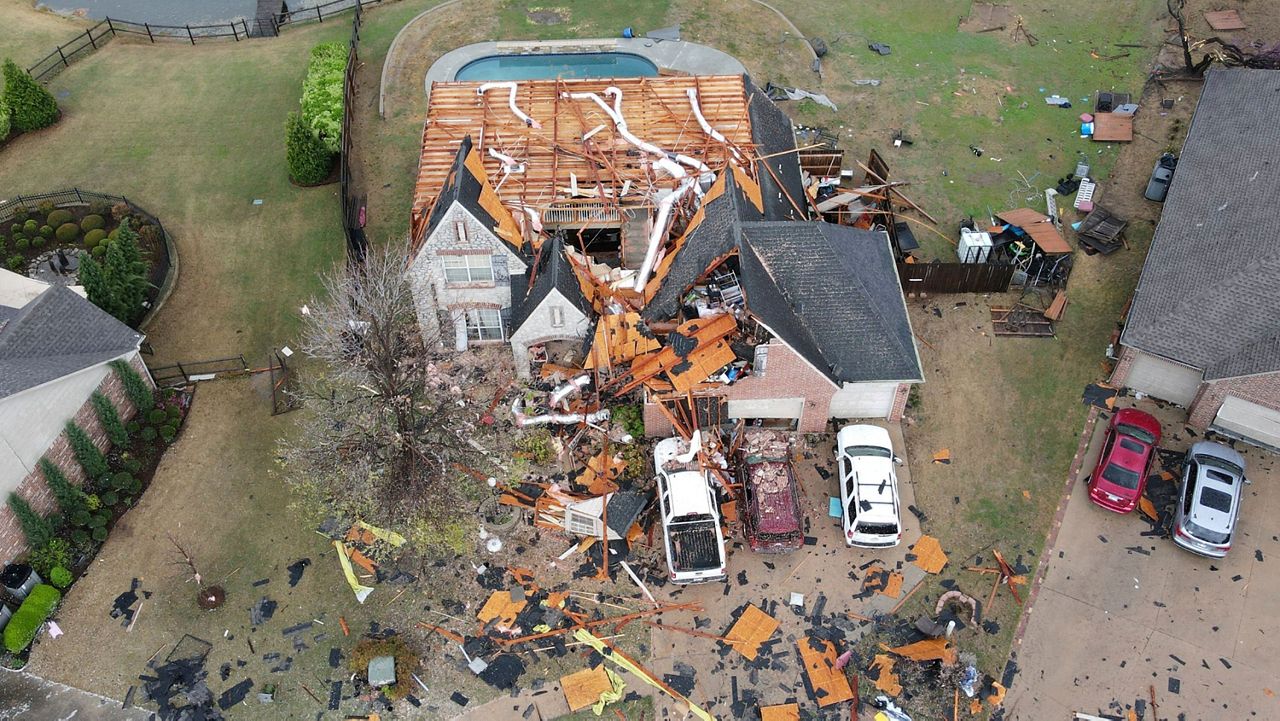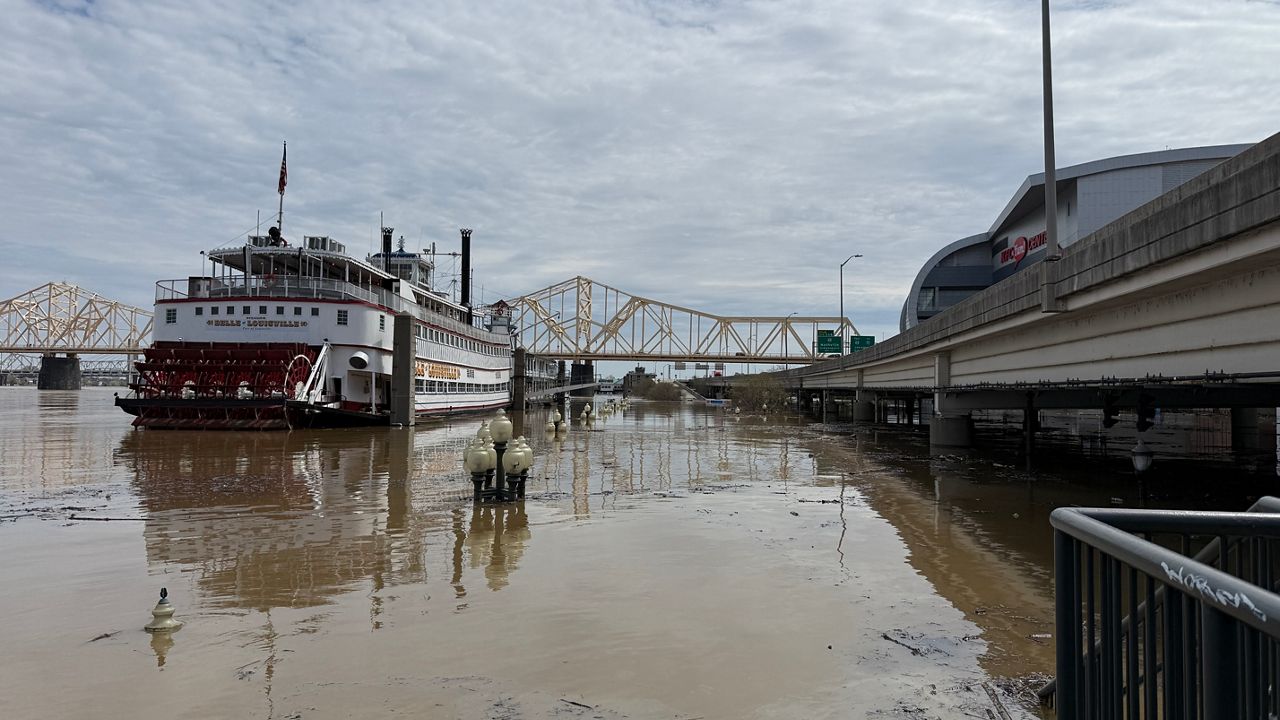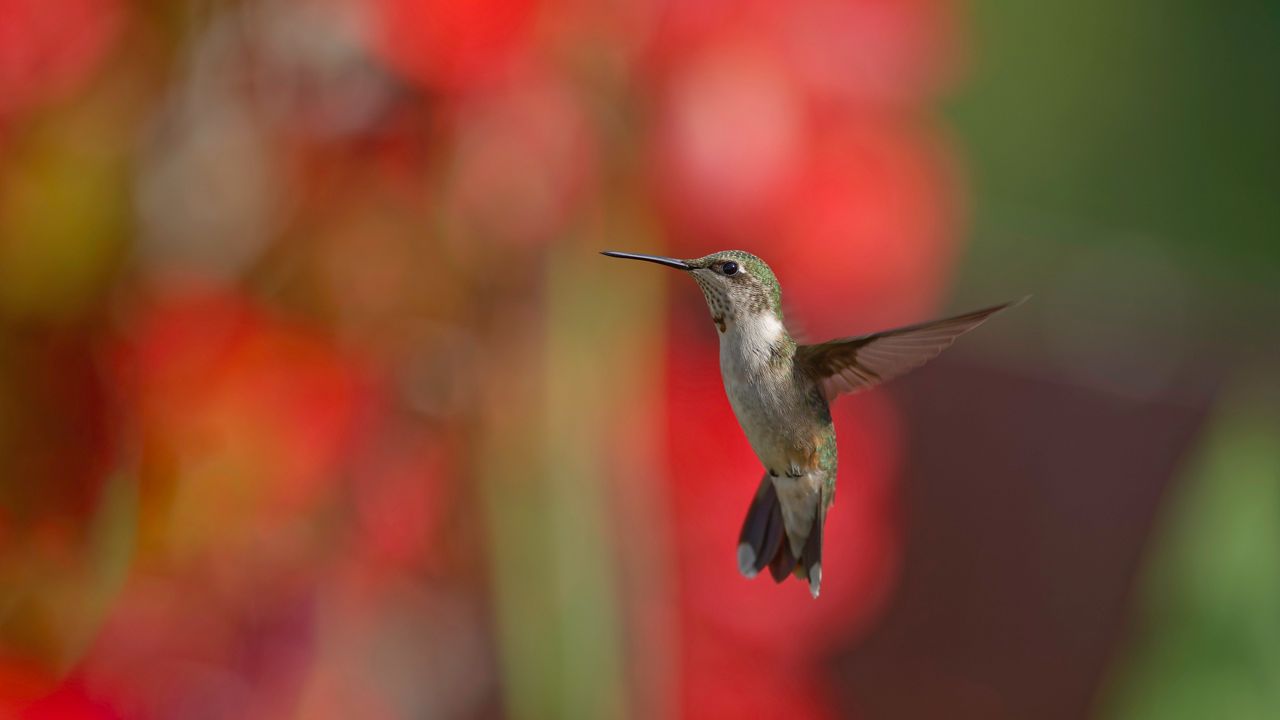Snow on some glaciers turns red in the summer. But why?
The pictures are striking. Streaks of red snow appear each summer. They are seen on glaciers in the Alps in Switzerland and France. They also appear in the United States in the Rockies and in the Sierra Mountains of California.
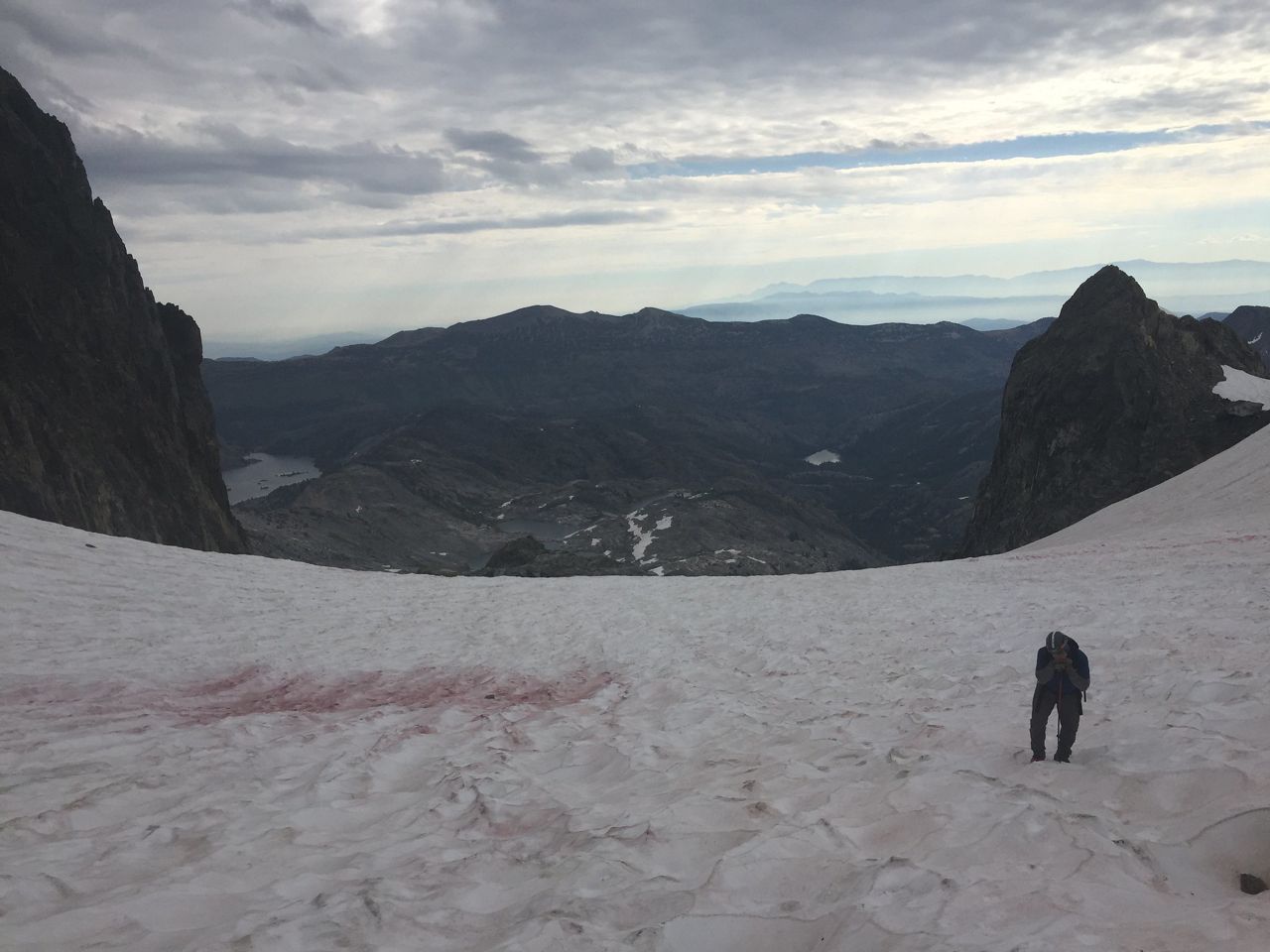
A microscopic algae organism causes the color change. It's dormant most of the year but becomes active during the short summer season of the high mountain peaks.
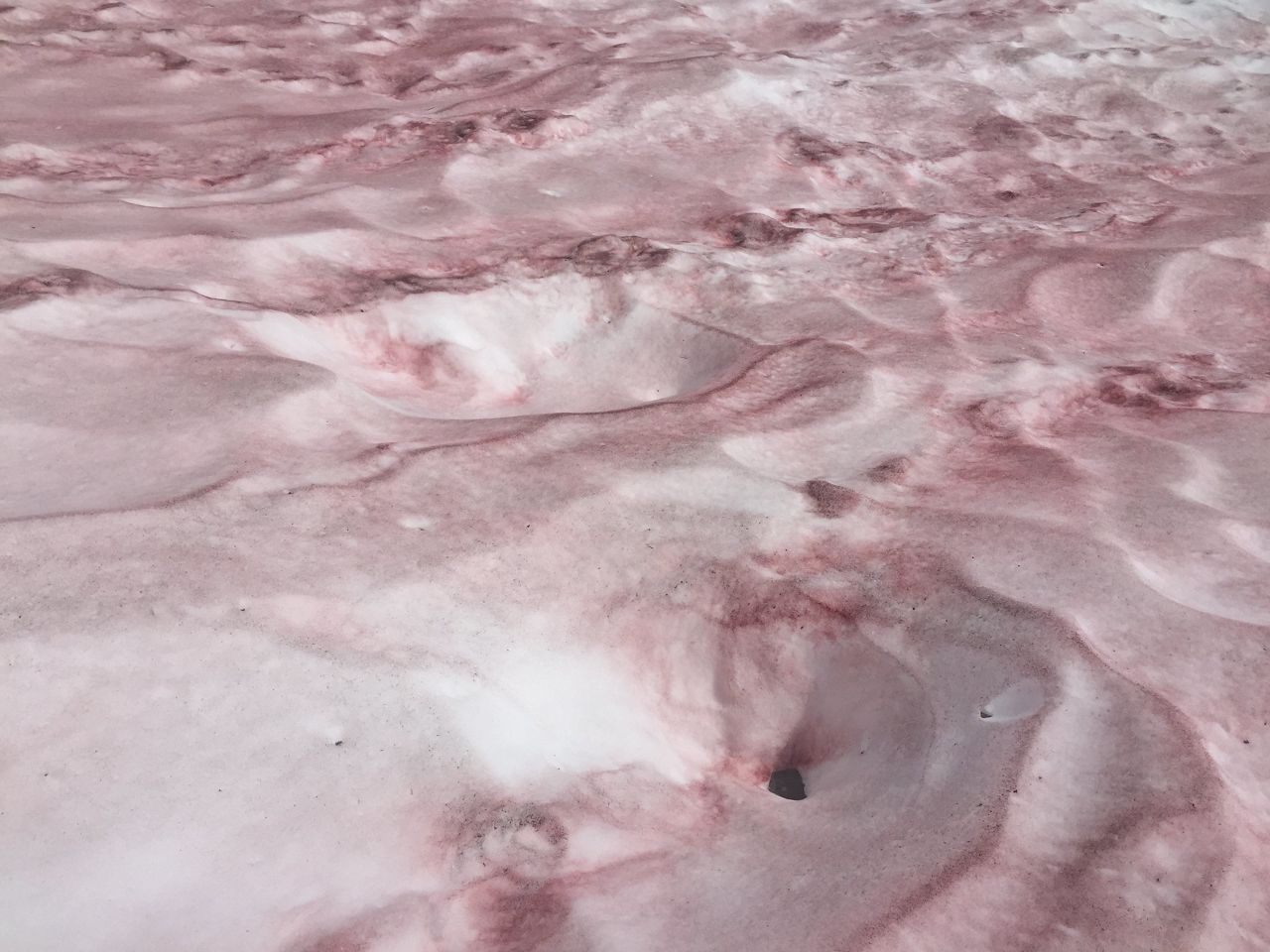
Its official name is chlamydomonas, and it's actually part of the same family of algae that can turn ponds green. This particular kind of algae has a pink pigment and it's vital for its survival. The red color actually protects the algae from harmful ultraviolet rays that are common on high mountaintops.
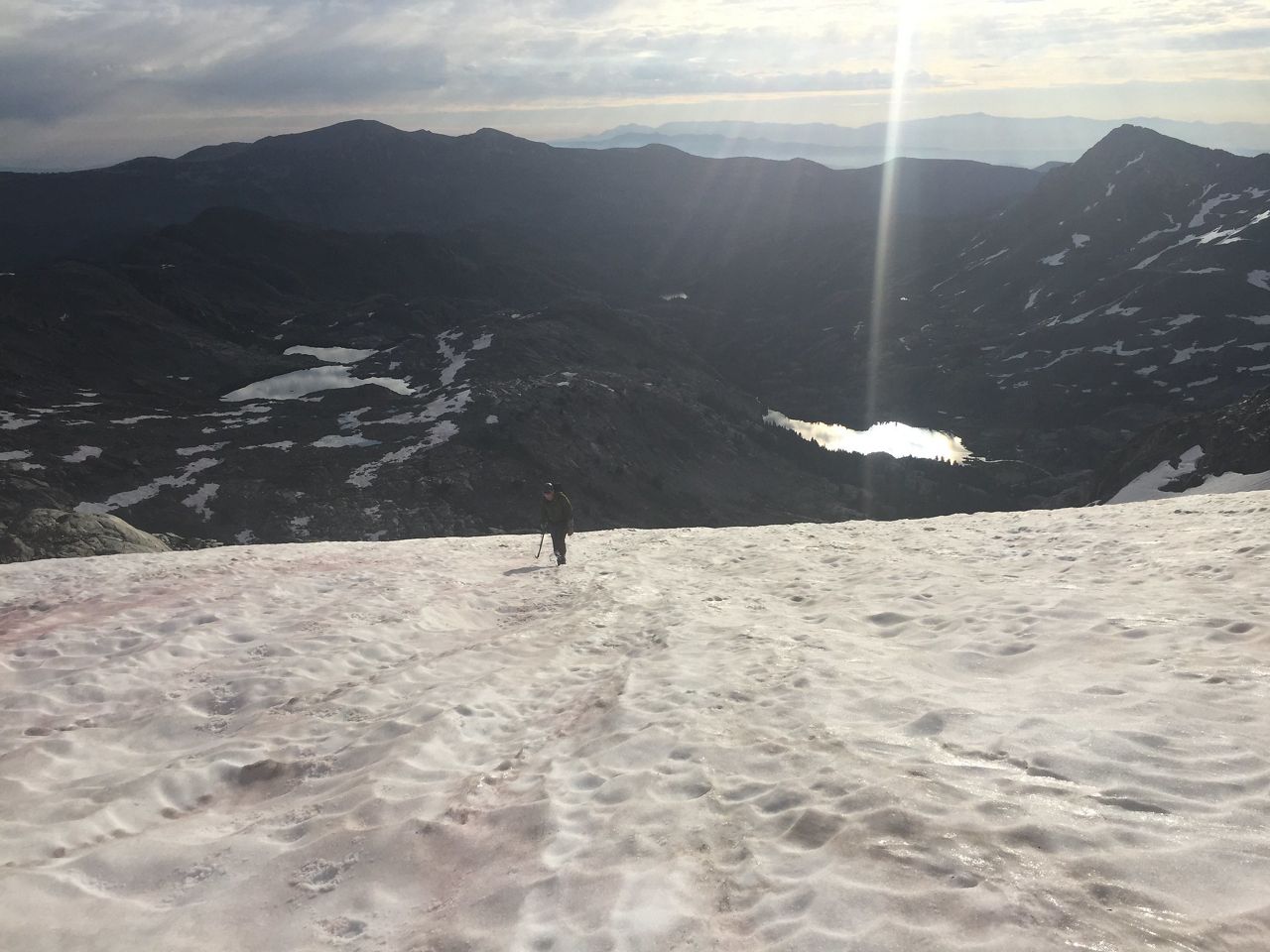
The red coloring of the algae organisms also has other effects. It causes the snow to melt more quickly, which releases more water that the algae need to survive.
The red snow melts faster than white snow because the darker color absorbs more sunlight than the light color does. This can cause glaciers to melt relatively quickly. Some scientists fear that a warmer climate will mean more algae blooms on glaciers, and that will cause them to melt faster.
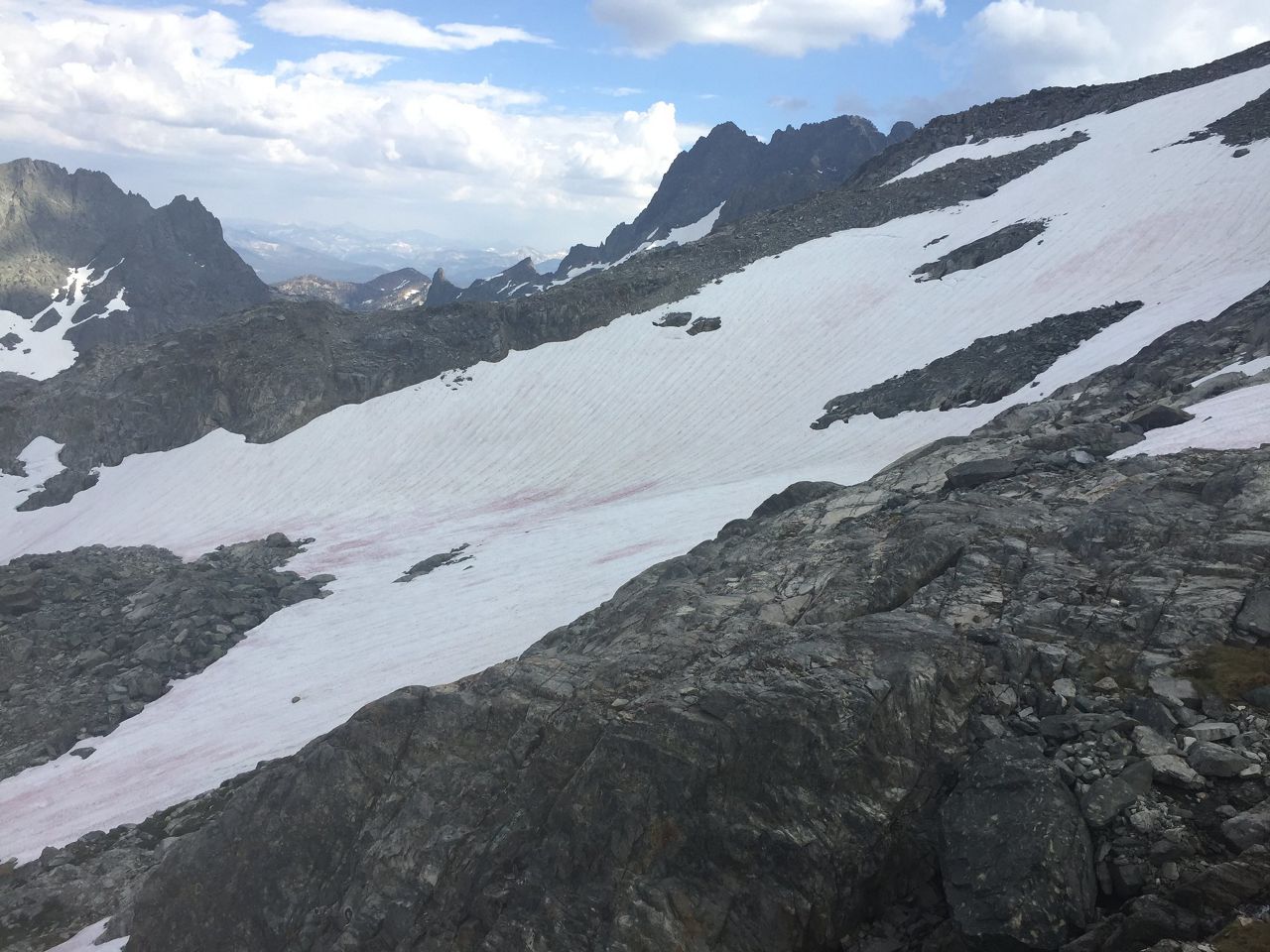
If you are wondering, the red color does stick to the soles of shoes and to the bottom of pants, but it will wash out.
Also, it may be called watermelon snow, but it's advised that you don't eat it. The algae could upset your stomach and no, there are no seeds in watermelon snow.
